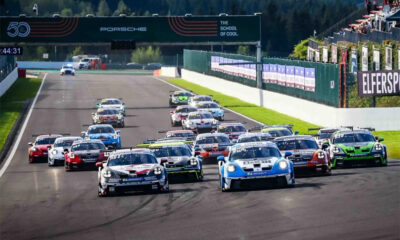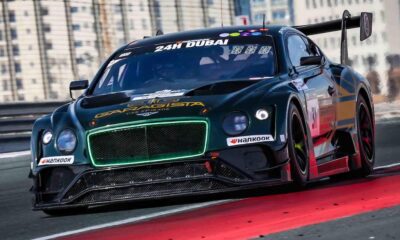
Photo: 24H Series
Creventic has revealed a series of regulation changes for the Michelin 24H Series ahead of the 2025 season, including a series-wide implementation of tire warmers as well as revised Code 60 rules and amateur stint lengths.
The new rule regarding the use of tire warmers means the entire field will be pulled level with the GT classes, which were already allowed the use of such warmers in previous seasons.
However, changes have been made to the qualifying format that will prevent teams from putting the single set of allocated tires into the heaters between qualifying segments and will only be allowed to remove or replace wheels and tires during qualifying if either have been damaged beyond reasonable repair.
Also new for 2025 is the countdown period into a Code 60, which has been introduced to avoid confusion about the start of a Code 60 period and improve competitor safety.
Meanwhile, a rule that was first trialed earlier this year and which limits teams during a single fuel stop during a Code 60 period has been carried over into the 2025 season. Teams will be allowed to refuel more than once in the event a Code 60 runs longer than one hour.
Rules with regards to amateur competitors have also been altered, with Bronze-rated drivers in GT3 Pro and 992 Pro now required to compete one-sixth of the race’s total race distance.
This is a significant increase compared to the one-twelfth rule that was previously in place and will mandate drivers to compete for at least two hours during a twelve-hour event and four hours at a 24-hour race to avoid earning their team a post-race penalty.
Furthermore, teams are no longer permitted to analyse their datalogger via laptop ahead of the restart during the two rounds with an overnight intervention (Mugello and Spa-Francorchamps), while the TCR category will be disbanded with TCR-homologated cars moving to the TCX class with suitably adjusted balance of performance instead.
Lighting System Rules Tweaked in Technical Regulations Changes
Creventic has also made a number of changes to rules for headlights and in-car lighting systems as part of tweaks to the technical regulations.
Moving forward, the exterior lights of each car must be able to function independently, even when the car’s engine is switched off.
Furthermore, race control will mandate when headlight repairs must be made for the safety of all entrants on track, should such repairs be required.
Teams will be permitted to leave repairs to one headlight, one rear light, and/or one brake light for example until their next scheduled pit stop. Similarly, loose or missing race numbers can be fixed or replaced during the next stop.
Should neither headlight, brake light nor rear light be operating however, competitors are required to pit their car immediately for repairs.

























